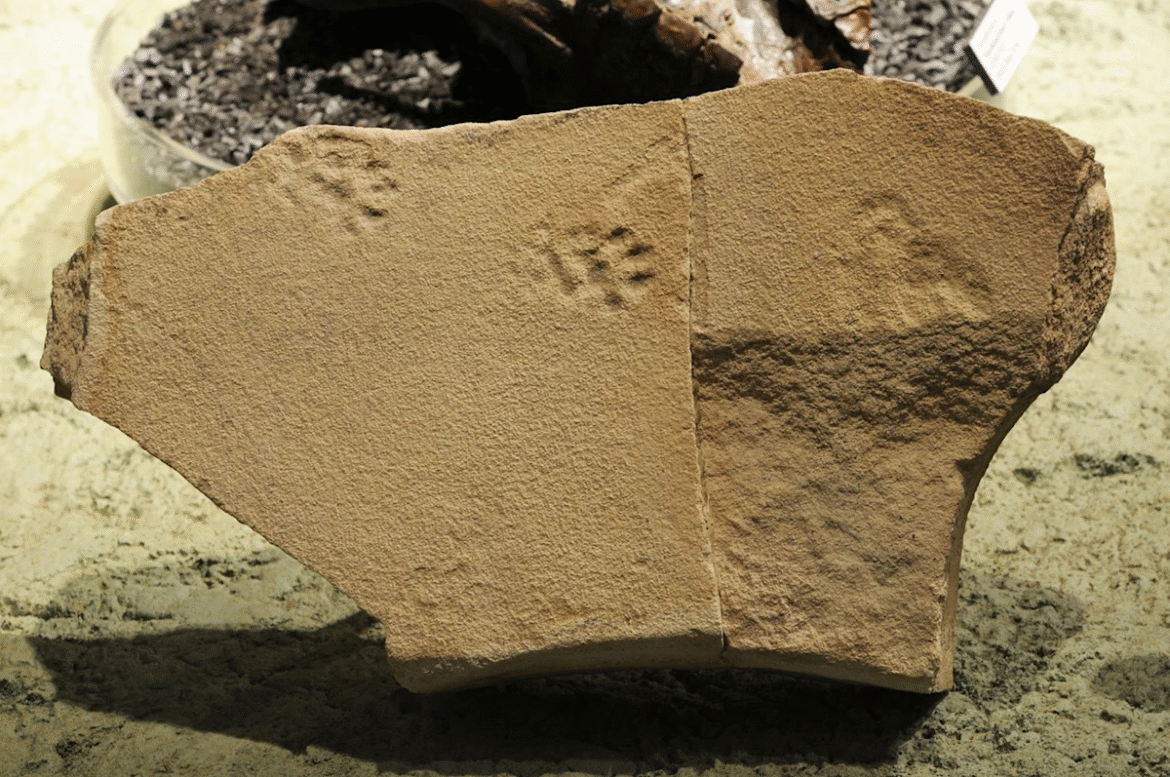Ever wonder how saber-toothed cats and other extinct creatures behaved? Well, a team of scientists unearthed ancient footprints that offer insight into how various prehistoric animals lived as far back as 50 million years.
The National Park Service (NPS) called the paleontological discovery at John Day Fossil Beds National Monument “groundbreaking,” as it gives an idea of what the long-extinct animals lived like in what is now central and eastern Oregon.
The scientists, led by fossil track specialist Conner Bennett, used advanced 3D imaging techniques to identify and analyze four sets of vertebrate trace fossils, including impressions left behind by prehistoric birds, mammals, lizards and invertebrates.
The team’s research, recently published in the peer-reiewed Palaeontologia Electronica journal, documents the first known fossil tracks of birds and lizards at the monument and “adds important behavioral context to the region’s well-established body fossil record.”
“This prehistoric behavior from 50 million years ago is still prevalent today in modern shorebirds,” Bennett said in a news release on April 17. “It’s fascinating. That is an incredibly long time for a species to exhibit the same foraging patterns as its ancestors.”
What prehistoric animals roamed Oregon 50 million years ago?
The scientists said the fossilized tracks, recovered from two distinct rock layers, uncovered behaviors and species previously undocumented in the monument’s fossil record, including:
-
Birds and Invertebrates (50–39 million years ago): Two small bird tracks found alongside invertebrate trails and beak marks indicate ancient shorebirds foraged for food in shallow water, a behavior similar to that seen in modern species.
-
Lizard Track (about 50 million years ago): A rare fossil track featuring clawed and splayed toes suggests a lizard once dashed along a lakebed, marking one of the few known reptile trackways from this period in North America.
-
Cat-like Predator (29 million years ago): A set of pawprints discovered in a volcanic ash layer could belong to a nimravid, a saber-toothed and bobcat-sized carnivorous predator, such as the Hoplophoneus. The animals share a characteristic with Marvel Comics’ Wolverine, as the lack of claw marks supports evidence of retractable claws, also similar to modern felines.
-
Tapir or Rhinoceros Ancestor (29 million years ago): Three-toed and rounded hoofprints are thought to have been made by a large herbivore, such as an ancient tapir or rhinoceros.
“These tracks offer a rare window into ancient ecosystems,” Nicholas Famoso, the monument’s paleontology program manager, said in the release. “They add behavioral context to the body fossils we’ve collected over the years and help us better understand the climate and environmental conditions of prehistoric Oregon.”
What do the fossil tracks mean?
Unlike body fossils such as bones and teeth, these trace fossils indicate the daily activities of long-extinct animals, according to the scientists. To create 3D models of the tracks, Bennett used photogrammetry to stitch together thousands of photographs that have been in museum storage since the 1980s.
“The fossil tracks not only help us confirm the existence of these animals in this time and place, but they also tell us how they lived,” Bennett said in the release.
Cat-like footprints from the John Day Formation of Oregon.
What is the John Day Fossil Beds National Monument?
John Day Fossil Beds National Monument, located in Wheeler and Grant counties in east-central Oregon, houses one of the longest and most complete fossil records of plants and animals from the Cenozoic Era, which spans from approximately 66 million years ago to the present day.
“Encompassing nearly 14,000 acres of protected lands, the park has preserved millions of years of geologic and evolutionary history,” according to NPS.
The monument also includes the Thomas Condon Paleontology and Visitor Center, which contains thousands of fossil specimens and features a research laboratory that’s open to the public.
This article originally appeared on USA TODAY: Prehistoric animal footprints found at John Day Fossil Beds in Oregon



